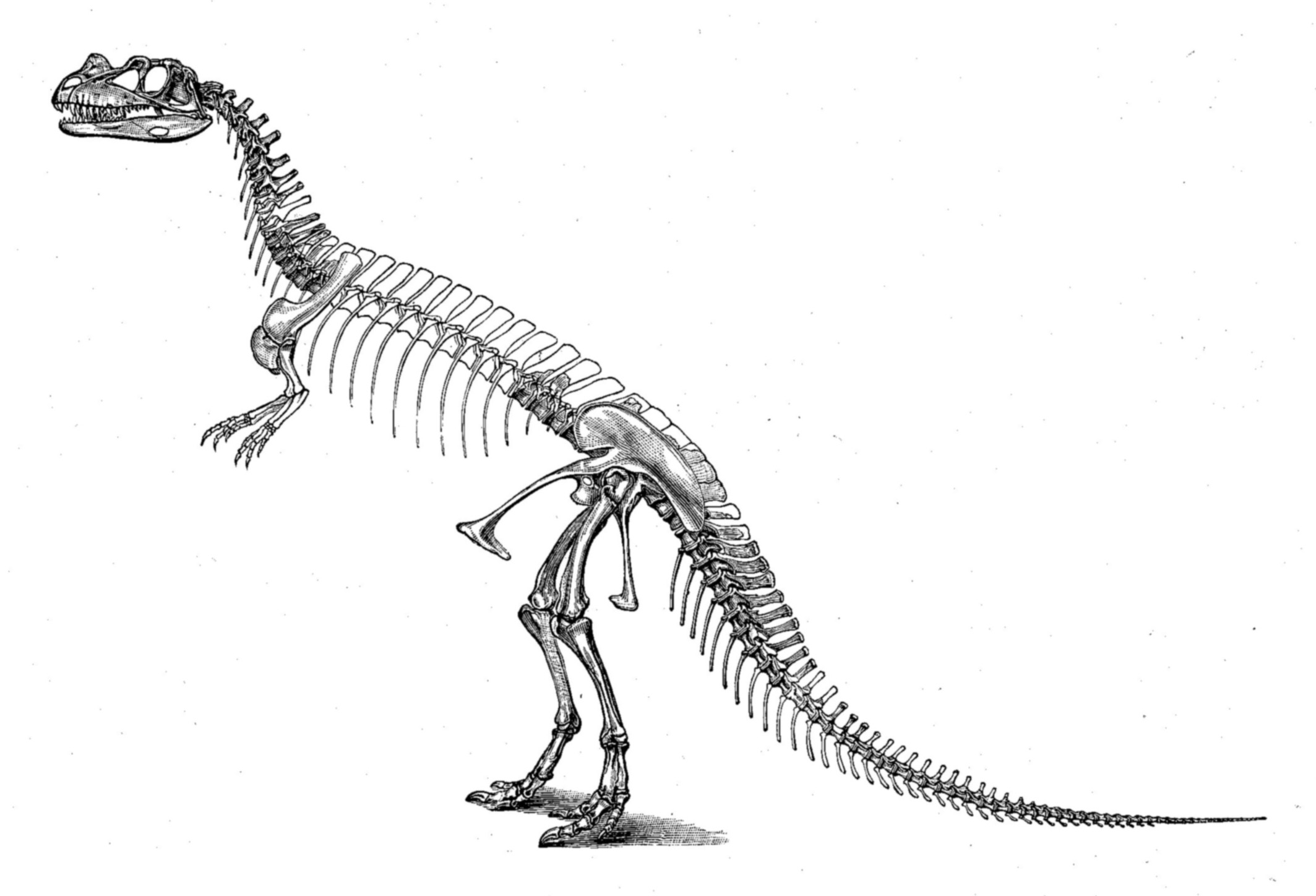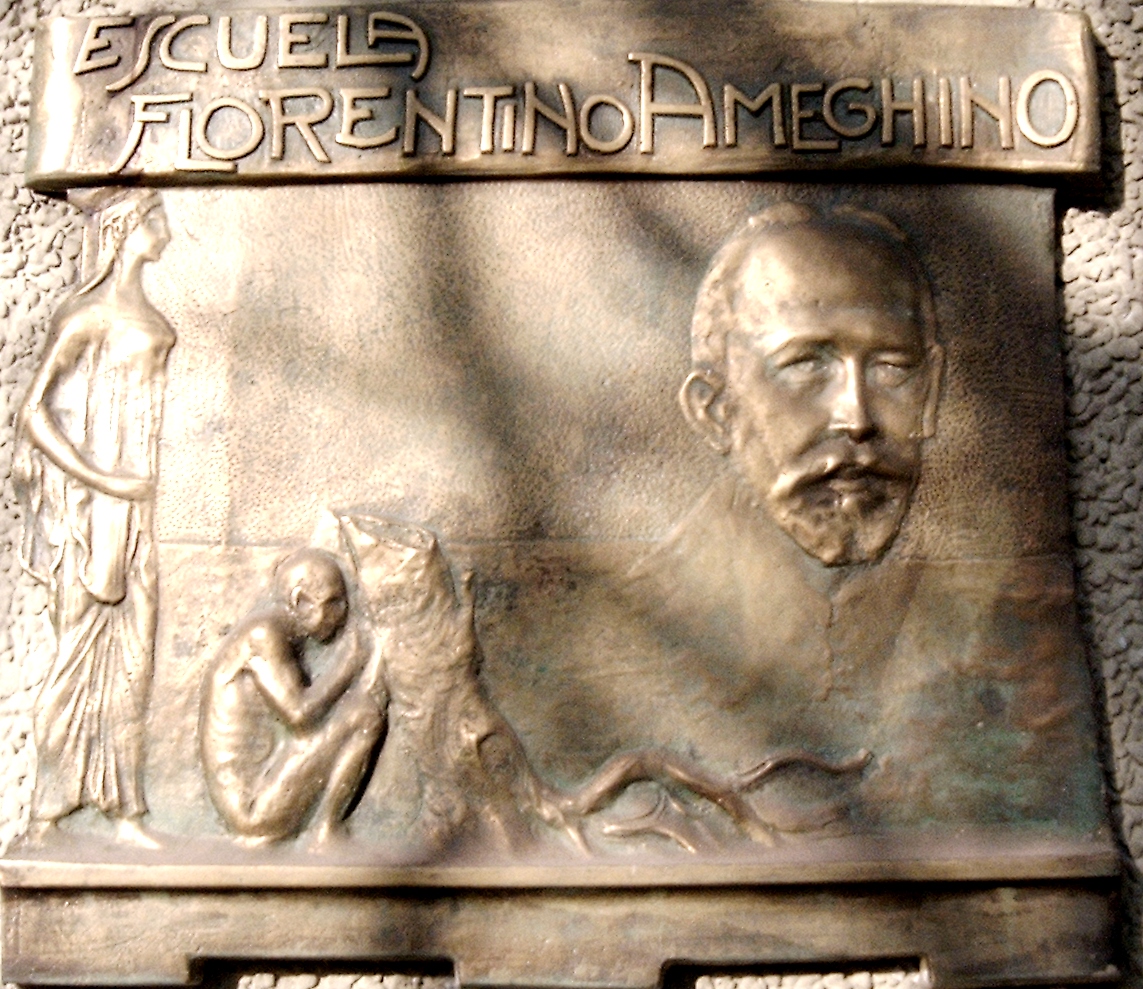|
Genyodectes
''Genyodectes'' ("jaw bite", from the Ancient Greek, Greek words ''genys'' ("jaw") and ''dektes'' ("bite")) is a genus of ceratosaurian theropod dinosaur from the Lower Cretaceous (Aptian) of South America. The holotype material (MLP 26–39, Museo de La Plata, La Plata, Argentina) was collected from the Cerro Barcino Formation, Cañadón Grande, Departamento Paso de Indios in the Chubut Province of Argentina and consists of an incomplete snout, including the premaxillae, portions of both maxillas, the right and left dentary, many teeth, a fragment of the left splenial, and parts of the supradentaries. These elements are generally poorly preserved and some are in articulation. The premaxilla of ''Genyodectes'' possesses relatively large and protruding teeth, similar to those of ''Ceratosaurus''. The specific name, ''serus'', means "late". In 2016 it was estimated to be 6.25 meters in length and 790 kg in weight. Taxonomy and phylogeny The taxon has long been considered a nome ... [...More Info...] [...Related Items...] OR: [Wikipedia] [Google] [Baidu] |
Ceratosaurus
''Ceratosaurus'' (from Ancient Greek, Greek κέρας/κέρατος, ' meaning "horn" and wikt:σαῦρος, σαῦρος ' meaning "lizard") was a carnivorous Theropoda, theropod dinosaur in the Late Jurassic Period (geology), period (Kimmeridgian to Tithonian). The genus (biology), genus was first described in 1884 by American paleontologist Othniel Charles Marsh based on a nearly complete skeleton discovered in Garden Park, Colorado, in rocks belonging to the Morrison Formation. The type species is ''Ceratosaurus nasicornis''. The Garden Park specimen remains the most complete skeleton known from the genus, and only a handful of additional specimens have been described since. Two additional species, ''Ceratosaurus dentisulcatus'' and ''Ceratosaurus magnicornis'', were described in 2000 from two fragmentary skeletons from the Cleveland-Lloyd Dinosaur Quarry, Cleveland-Lloyd Quarry of Utah and from the vicinity of Fruita, Colorado. The Valid name (zoology), validity of the ... [...More Info...] [...Related Items...] OR: [Wikipedia] [Google] [Baidu] |
Cerro Barcino Formation
The Cerro Barcino Formation (also known as the Gorro Frigio Formation) is a geological formation in South America whose strata span the Early Cretaceous to the earliest Late Cretaceous. The top age for the formation has been estimated to be Cenomanian. Earlier estimates placed the formation until the Campanian. The formation was deposited in the Cañadón Asfalto Basin, a rift basin that started forming in the earliest Jurassic. Dinosaur remains are among the fossils that have been recovered from the formation. The Cerro Barcino Formation is the second-youngest unit of the Chubut Group, which also includes the older Los Adobes Formation. Both formations cover a vast area in Chubut Province, Argentina. The two formations are distinguished by geological features suggesting a distinct change in climate, from a wetter, flood plain environment in the Los Adobes to a much more arid, desert-like environment in the Cerro Barcino.Rauhut et al., 2003 The Cerro Barcino Formation is subdiv ... [...More Info...] [...Related Items...] OR: [Wikipedia] [Google] [Baidu] |
Ceratosaur
Ceratosaurs are members of the clade Ceratosauria, a group of dinosaurs defined as all theropods sharing a more recent common ancestor with ''Ceratosaurus'' than with birds. The oldest known ceratosaur, ''Saltriovenator'', dates to the earliest part of the Jurassic, around 199 million years ago. According to the majority of the latest research, Ceratosauria includes three major clades: Ceratosauridae, Noasauridae, and Abelisauridae, found primarily (though not exclusively) in the Southern Hemisphere. Originally, Ceratosauria included the above dinosaurs plus the Late Triassic to Early Jurassic Coelophysoidea and Dilophosauridae, implying a much earlier divergence of ceratosaurs from other theropods. However, most recent studies have shown that coelophysoids and dilophosaurids do not form a natural group with other ceratosaurs, and are excluded from this group. Ceratosauria derives its names from the type species, ''Ceratosaurus nasicornis'', described by O.C. Marsh in 1884. A ... [...More Info...] [...Related Items...] OR: [Wikipedia] [Google] [Baidu] |
Loncosaurus Argentinus
''Loncosaurus'' (meaning uncertain; either Araucanian "chief" or Greek "lance" "lizard"Norman, D.B., and Weishampel, D.B. 1990. Iguanodontidae and related ornithopods. In: Weishampel, D.B., Dodson, P., and Osmólska, H. (eds.). ''The Dinosauria''. University of California Press:Berkeley, 510-533. Norman, D.B. 2004. Basal Iguanodontia. In: Weishampel, D.B., Dodson, P., and Osmólska, H. (eds.). ''The Dinosauria'' (second edition). University of California Press:Berkeley, 413-437. George Olshevsky'Dinosaur Genera List/ref> Ameghino, F. 1899. Nota preliminar sobre el ''Loncosaurus argentinus'', un representante de la familia Megalosauridae de la República Argentina. ''Anales de la Sociedad Cientifica Argentina'' 49:61-62. panish/ref>Coria, R.A., and Salgado, L. 1996. ''Loncosaurus argentinus'' Ameghino, 1899 (Ornithischia, Ornithopoda): a revised description with comments on its phylogenetic relationships. ''Ameghiniana'' 33(4):373-376.Glut, D.F. (1997). ''Dinosaurs: The Encyclo ... [...More Info...] [...Related Items...] OR: [Wikipedia] [Google] [Baidu] |
Loncosaurus
''Loncosaurus'' (meaning uncertain; either Araucanian "chief" or Greek "lance" "lizard"Norman, D.B., and Weishampel, D.B. 1990. Iguanodontidae and related ornithopods. In: Weishampel, D.B., Dodson, P., and Osmólska, H. (eds.). ''The Dinosauria''. University of California Press:Berkeley, 510-533. Norman, D.B. 2004. Basal Iguanodontia. In: Weishampel, D.B., Dodson, P., and Osmólska, H. (eds.). ''The Dinosauria'' (second edition). University of California Press:Berkeley, 413-437. George Olshevsky'Dinosaur Genera List/ref> Ameghino, F. 1899. Nota preliminar sobre el ''Loncosaurus argentinus'', un representante de la familia Megalosauridae de la República Argentina. ''Anales de la Sociedad Cientifica Argentina'' 49:61-62. panish/ref>Coria, R.A., and Salgado, L. 1996. ''Loncosaurus argentinus'' Ameghino, 1899 (Ornithischia, Ornithopoda): a revised description with comments on its phylogenetic relationships. ''Ameghiniana'' 33(4):373-376.Glut, D.F. (1997). ''Dinosaurs: The Encyclo ... [...More Info...] [...Related Items...] OR: [Wikipedia] [Google] [Baidu] |
Early Cretaceous
The Early Cretaceous ( geochronological name) or the Lower Cretaceous (chronostratigraphic name), is the earlier or lower of the two major divisions of the Cretaceous. It is usually considered to stretch from 145 Ma to 100.5 Ma. Geology Proposals for the exact age of the Barremian-Aptian boundary ranged from 126 to 117 Ma until recently (as of 2019), but based on drillholes in Svalbard the defining early Aptian Oceanic Anoxic Event 1a (OAE1a) was carbon isotope dated to 123.1±0.3 Ma, limiting the possible range for the boundary to c. 122–121 Ma. There is a possible link between this anoxic event and a series of Early Cretaceous large igneous provinces (LIP). The Ontong Java-Manihiki-Hikurangi large igneous province, emplaced in the South Pacific at c. 120 Ma, is by far the largest LIP in Earth's history. The Ontong Java Plateau today covers an area of 1,860,000 km2. In the Indian Ocean another LIP began to form at c. 120 Ma, the Kerguelen P ... [...More Info...] [...Related Items...] OR: [Wikipedia] [Google] [Baidu] |
Bird
Birds are a group of warm-blooded vertebrates constituting the class Aves (), characterised by feathers, toothless beaked jaws, the laying of hard-shelled eggs, a high metabolic rate, a four-chambered heart, and a strong yet lightweight skeleton. Birds live worldwide and range in size from the bee hummingbird to the ostrich. There are about ten thousand living species, more than half of which are passerine, or "perching" birds. Birds have whose development varies according to species; the only known groups without wings are the extinct moa and elephant birds. Wings, which are modified forelimbs, gave birds the ability to fly, although further evolution has led to the loss of flight in some birds, including ratites, penguins, and diverse endemic island species. The digestive and respiratory systems of birds are also uniquely adapted for flight. Some bird species of aquatic environments, particularly seabirds and some waterbirds, have further evolved for swimming. B ... [...More Info...] [...Related Items...] OR: [Wikipedia] [Google] [Baidu] |
Florentino Ameghino
Florentino Ameghino (born Giovanni Battista Fiorino Giuseppe Ameghino September 19, 1853 – August 6, 1911) was an Argentine naturalist, paleontologist, anthropologist and zoologist, whose fossil discoveries on the Argentine Pampas, especially on Patagonia, rank with those made in the western United States during the late 19th century. Along with his two brothers –Carlos and Juan– Florentino Ameghino was one of the most important founding figures in South American paleontology. From 1887 until his death, Ameghino was passionately devoted to the study of fossil mammals from Patagonia, with the valuable support of his brother Carlos Ameghino (1865–1936) who, between 1887 and 1902, made 14 trips to that region, where he discovered and collected numerous fossil faunas and made important stratigraphic observations which helped to support his journal Ameghiniana. Biography Ameghino was born on September 19, 1853 in Tessi, an hamlet of Moneglia, a municipality of Liguria in Ita ... [...More Info...] [...Related Items...] OR: [Wikipedia] [Google] [Baidu] |
Dinilysia
''Dinilysia'' (meaning "terrible ilysia") is an extinct genus of snake from the Late Cretaceous ( Coniacian) of South America. ''Dinilysia'' was a relatively large ambush predator, measuring approximately long. The skull morphology of ''Dinilysia'' is similar to boid The Boidae, commonly known as boas or boids, are a family of nonvenomous snakes primarily found in the Americas, as well as Africa, Europe, Asia, and some Pacific Islands. Boas include some of the world's largest snakes, with the green anaconda ...s, suggesting that it was able to consume large prey. Living in a desert-like environment, ''Dinilysia'' is likely a terrestrial or a semi- fossorial animal. Physiology and Lineage The ''Dinilysia patagonica'' is a stem snake that is very closely related to the original ancestor of the clade of crown snakes. Once the fossil of the snake was discovered, an x-ray computed tomography was used to build a digitized endocast of its inner ear. The results disp ... [...More Info...] [...Related Items...] OR: [Wikipedia] [Google] [Baidu] |
Meiolania
''Meiolania'' ("small roamer") is an extinct genus of meiolaniid stem-turtle native to Australasia from the Middle Miocene to Late Pleistocene and possibly Holocene. It is best known from fossils found on Lord Howe Island, though fossils are known from mainland Australia, New Caledonia, and possibly Vanuatu and Fiji. Taxonomy The genus was erected in 1886 based on remains found on Lord Howe Island, which Richard Owen assigned to the two species ''M. platyceps'' and ''M. minor'' (now a synonym of the former). These were the first good meiolaniid remains, and were used to show that the first known remains of a related animal, a species from Queensland now known as '' Ninjemys oweni'' (which was assigned to ''Meiolania'' until 1992), did not belong to lizards as initially thought, but to turtles. Woodward sank ''Niolamia argentina'' into ''Meiolania'', but this was not accepted by later authors. The species of the genus may be summarized as In New Caledonia, ''M. mackayi'' was ... [...More Info...] [...Related Items...] OR: [Wikipedia] [Google] [Baidu] |
Paleontologist
Paleontology (), also spelled palaeontology or palæontology, is the scientific study of life that existed prior to, and sometimes including, the start of the Holocene epoch (roughly 11,700 years before present). It includes the study of fossils to classify organisms and study their interactions with each other and their environments (their paleoecology). Paleontological observations have been documented as far back as the 5th century BC. The science became established in the 18th century as a result of Georges Cuvier's work on comparative anatomy, and developed rapidly in the 19th century. The term itself originates from Greek (, "old, ancient"), (, ( gen. ), "being, creature"), and (, "speech, thought, study"). Paleontology lies on the border between biology and geology, but differs from archaeology in that it excludes the study of anatomically modern humans. It now uses techniques drawn from a wide range of sciences, including biochemistry, mathematics, and engineering. ... [...More Info...] [...Related Items...] OR: [Wikipedia] [Google] [Baidu] |



.jpg)



